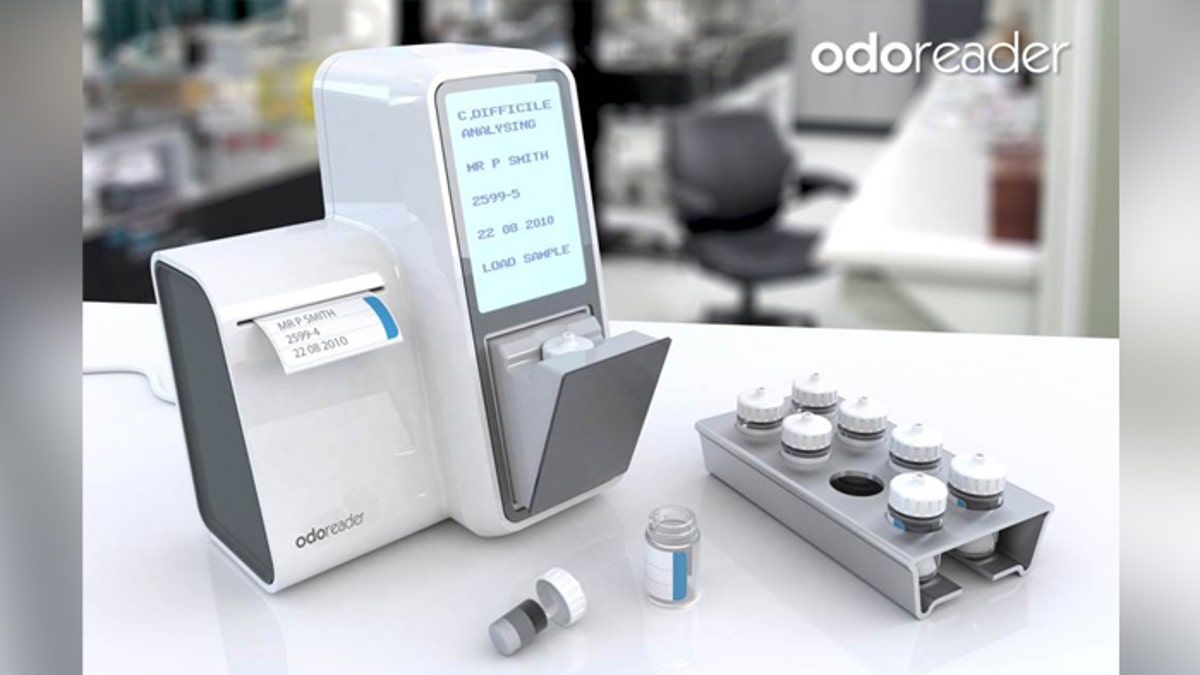
An artist impression of the ODOREADER device, first designed to diagnose patients with C. difficile. (University of Liverpool)
Unlike some cancers, bladder cancer can be tricky to detect, as there are currently no reliable biomarkers clinicians can use for screening patients.
Now, researchers from the University of Liverpool and the University of the West of England in Bristol have manufactured a device that could make the detection of bladder cancer much easier and more reliable.
But rather than rely on detecting proteins related to the cancer, the machine relies on something else entirely – the scent of the patient’s urine.
Aptly named the ODOREADER®, the device operates similarly to a small microwave, in that a clinician can take a sample of a patient’s urine and place it into the machine. Then, the clinician flips a switch, and an interior sensor analyzes the gases emitted by the urine.
According to lead researcher Dr. Chris Probert, a gastroenterologist for the University of Liverpool’s Institute of Translational Medicine, urine and feces will sometimes smell differently during certain disease situations. This prompted Probert and his colleagues to look at certain smells associated with the superbug C. difficile, which causes patients’ feces to have a very pungent aroma.
The idea to utilize this kind of scent analysis originated out of a combination of this research and previous studies using scent detection dogs to identify cancer.
“In a paper reported about 10 years ago, researchers used trained dogs to recognize the smell of urine with people with bladder cancer,” Probert told FoxNews.com. “They trained the dogs in a typical ‘Pavlov-ian’ way, giving them a reward when they smelled the scent of urine from bladder cancer patients…The dogs were quite good, but they didn’t get it (right) as often as our machine gets it right.”
While the scientists do not yet know the specific gas compounds associated with bladder cancer, their machine uses an advanced algorithm to produce a chemical “profile” of the urine sample.
“It produces a graphic, and it’s quite easy to see,” Probert said. “We give two examples of people with cancer and two examples of those without, and the (graph) shape is just different. The shapes of the lines are dictated by gasses coming off the urine.”
Current screening methods for bladder cancer involve looking for associated proteins or cells shed from the lining of the bladder in at-risk populations – such as people who work with insulation or rubber. However, these biomarkers can only detect the cancer with 50 to 80 percent accuracy. Out of 98 urine samples – 24 from patients known to have cancer and 74 from patients with urological symptoms but no cancer – the ODOREADER was able to correctly identify the cancer patients 100 percent of the time.
Bladder cancer is one of the more common forms of cancer, with more than 72,000 new cases diagnosed in the United States each year, according to the American Cancer Society. Most cases are diagnosed during the early stages of the disease, when the cancer is treatable. However, once cured, patients typically have to undergo yearly screenings for the rest of their lives, since bladder cancer is likely to reoccur. This involves undergoing a cystoscopy, an endoscopy of the bladder through the urethra.
Given the good results from their new device, Probert hopes to replace this type of test with the ODOREADER for future patients.
“Cystoscopy is a very unpleasant procedure and quite embarrassing,” Probert said. “…There’s a lot of anxiety and stress involved. We’d like to replace that with a urine test that could at the very least stratify the patient into low-risk or high-risk. So the patients who don’t need to have that extra test done can come back and have a urine sample analyzed.”
Probert noted that while they are working hard to get their device into clinics, they will continue to search for a definitive gas compound found in urine of patients with bladder cancer.
“Potentially we can drill down into the (graphic) shape and say, ‘What are the gasses in that part?’” Probert said. “What compound is the machine detecting? And then we can link that compound with what is abnormal with that cancer.”
The research is published in the most recent edition of the journal PLOS ONE.